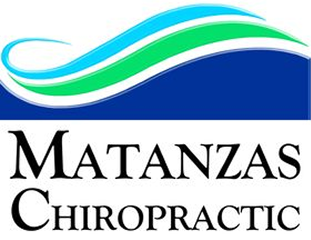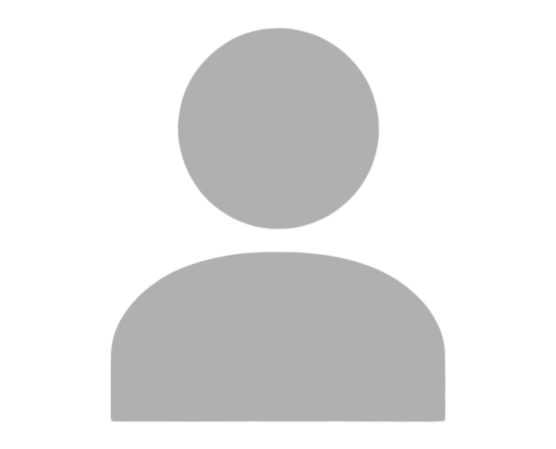
Why Choose Dr. Hornocker
Dr. Hornocker’s Full CV For Your Review?
SELECTED OCCUPATIONAL HISTORY
- Owner/Chiropractic Physician, Matanzas Chiropractic and Spine Injury Center, St. Augustine, FL, 2014 – Present
- Owner/Chiropractic Physician, Balanced Heath Center for chiropractic Care, Daytona Beach, FL, 2010 – 2014
- Staff Chiropractor, Daytona Neurology Associates, Daytona Beach, FL, 2010 – 2013
- Staff Chiropractor, Auburndale Chiropractic, Auburndale, FL, 2008 – 2010
- Staff Chiropractor, Nu-Best Whiplash Center, Palm Harbor, FL, 2006 – 2008
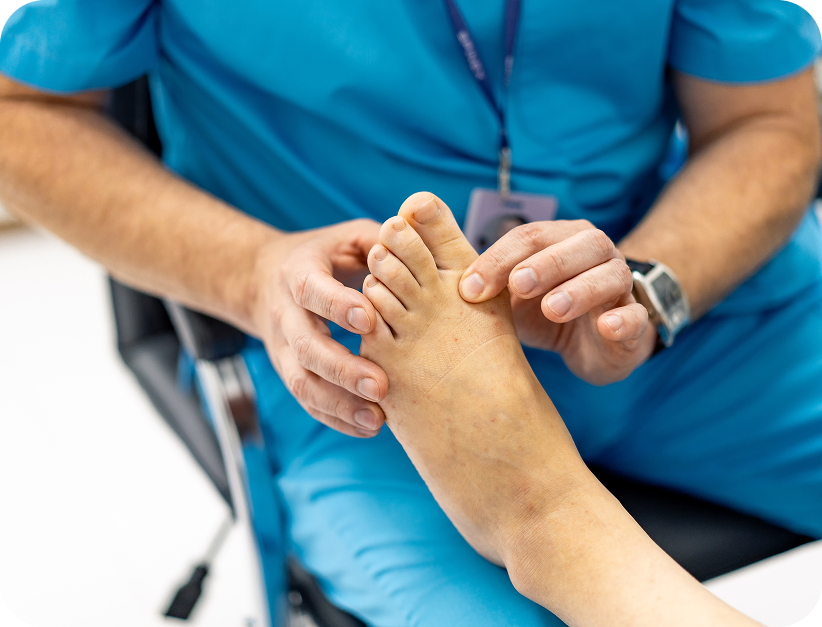
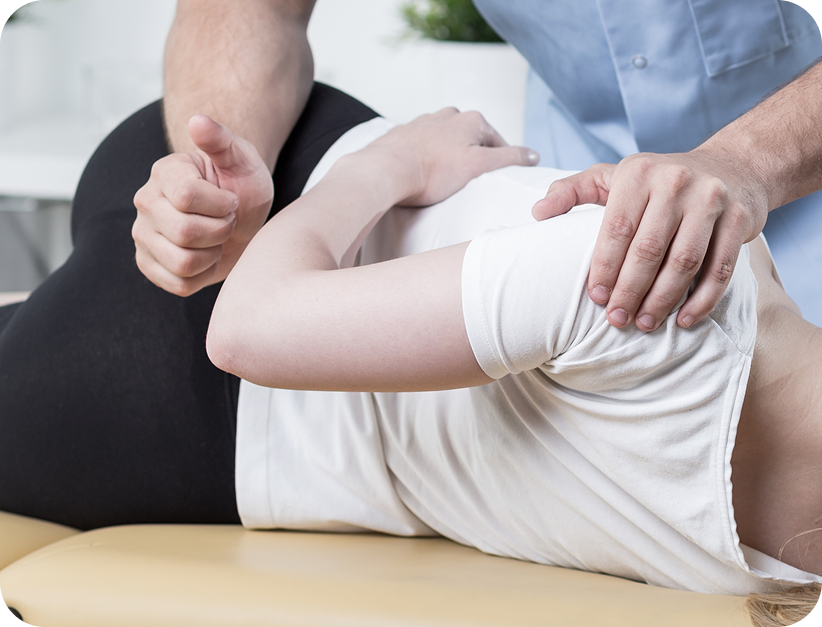
EDUCATION AND LICENSURE
- Doctor of Chiropractic, Licensed in the State of Florida, License # CH9179, 2006 – Present
- Doctorate of Chiropractic, Palmer College of Chiropractic, Port Orange, Florida, 2006
- National Board of Chiropractic Examiners, Florida Laws and Rules Examination, 2006
- National Board of Chiropractic Examiners, Physiotherapy, 2006
- National Board of Chiropractic Examiners, Part III, 2005
- National Board of Chiropractic Examiners, Part II, 2005
- National Board of Chiropractic Examiners, Part I, 2005
- Bachelor in the study of Microbiology and Cell Sciences, Gainesville, Florida, 2000
SELECTED POST-GRADUATE EDUCATION
Chiropractic as the First Option for Spine
A Literature-Based Standard, Utilizing clinical findings in conjunction with advanced imaging and electrodiagnostic findings in managing collaborative relationships with medical specialists. Applying a literature standard to care to ensure conservative care as the first option. PACE Approved for the Federation of Chiropractic Licensing Boards, Cleveland University Kansas City, Academy of Chiropractic Post-Doctoral Division, Long Island, NY, 2021
Chiropractic as the First Option for Spine
A Literature-Based Standard, Managing spinal related cases based upon MRI findings of herniations, bulges, protrusion, extrusions (comminuted and fragmented) utilizing thin-sliced acquisition protocols. When to consider ordering T1, T2, Short Tau Inversion Radiant, proton density and Dixon sequencing for spinal related pathology. PACE Approved for the Federation of Chiropractic Licensing Boards, Cleveland University Kansas City, Academy of Chiropractic Post-Doctoral Division, Long Island, NY, 2021
Chiropractic as the First Option for Spine
A Literature-Based Standard, Creating literature-based documentation inclusive of history and a clinical examination that encompasses causality, diagnosis, prognosis and treatment plans. Ensuring the whole person impairment ratings are consistent with contemporary literature. PACE Approved for the Federation of Chiropractic Licensing Boards, Cleveland University Kansas City, Academy of Chiropractic Post- Doctoral Division, Long Island, NY, 2021
Chiropractic as the First Option for Spine
A Literature-Based Standard, Spinal biomechanical engineering models related to pathobiomechanics and literature-based standards in creating an accurate diagnosis, prognosis, and treatment plan. Determining impairment ratings based upon alteration of motion segment integrity utilizing motion- imaging, and creating demonstrable evidence for continued treatment plans. PACE Approved for the Federation of Chiropractic Licensing Boards, Cleveland University Kansas City, Academy of Chiropractic Post-Doctoral Division, Long Island, NY, 2021
Studies About Stroke
Stroke Anatomy and Physiology
Brain Vascular Anatomy, The anatomy and physiology of the brain and how blood perfusion effects brain function. A detailed analysis of the blood supply to the brain and the physiology of ischemia. Cleveland University – Kansas City, ACCME Joint Providership with the State University of New York at Buffalo Jacobs School of Medicine and Biomedical Sciences, Academy of Chiropractic Post-Doctoral Division, Buffalo, NY, 2021
Stroke Anatomy and Physiology
Stroke Types and Blood Flow, Various types of stroke identifying ischemia, hypoperfusion, infarct and penumbra zones and emboli. Cardiac etiologies and clinical features as precursor to stroke with associated paradoxical emboli and thrombotic etiologies. Historical and co-morbidities that have etiology instroke inclusive of diabetes, coagulopathy, acquired and hereditary deficiencies. Cleveland University – Kansas City, ACCME Joint Providership with the State University of New York at Buffalo Jacobs School of Medicine and Biomedical Sciences, Academy of Chiropractic Post-Doctoral Division, Buffalo, NY, 2021
Stroke Principles of Treatment
An overview for the Primary Care Provider, Stroke type and treatments performed by vascular specialists. The goals of treatment with the physiology of the infarct and penumbra zones and the role of immediate triage in the primary care setting. Detailing the complications of stroke and future care in the chiropractic, primary care or manual medicine clinical setting. Cleveland University – Kansas City, ACCME Joint Providership with the State University of New York at Buffalo Jacobs School of Medicine and Biomedical Sciences, Academy of Chiropractic Post-Doctoral Division, Buffalo, NY, 2021
Clinical Evaluation and Protocols for Identifying Stroke Risk
The neurological history and examination for identifying stroke risks with a focus on supra and infratentorial regions, upper and lower motor lesions, cranial nerve signs, spinal cord pathology, motor and sensory pathology and gait abnormalities. Examining genetic and family histories along with dissection risk factors. Stroke orthopedic testing and clinical guidelines pertaining to triage for the primary care provider. Cleveland University – Kansas City, ACCME Joint Providership with the State University of New York at Buffalo Jacobs School of Medicine and Biomedical Sciences, Academy of Chiropractic Post- Doctoral Division, Buffalo, NY, 2021
Studies About Head Trauma and Brain Injury
Traumatic Brain Injury and Concussion
Overview: This section is an in-depth overview of traumatic brain injury in concussion. It discusses that all brain injuries are traumatic and dispels the myth of a “mild traumatic brain injury.” Also, this covers triage protocols and the potential sequela of patients with traumatic brain injuries. Cleveland University, Kansas City, Academy of Chiropractic, Post-Doctoral Division, Long Island, NY, 2021
Head Trauma and Traumatic Brain Injury Part 1
This section discusses gross traumatic brain injuries from trauma and significant bleeding with both epidural and subdural hematomas. There are numerous case studies reviewed inclusive of neurosurgical intervention and postsurgical outcomes. Cleveland University, Kansas City, Academy of Chiropractic, Post-Doctoral Division, Long Island, NY, 2021
Head Trauma and Traumatic Brain Injury Part 2
This section continues with multiple case studies of gross traumatic brain injuries from trauma requiring neurosurgical intervention and also discusses recovery sequela based upon the significance of brain trauma. This module also concludes with concussion protocols in traumatic brain injury short of demonstrable bleeding on advanced imaging. Cleveland University, Kansas City, Academy of Chiropractic, Post- Doctoral Division, Long Island, NY, 2021
Studies About Concussion
Concussion And Electroencephalogram Testing
This this section covers concussion etiology and cognitive sequela where gross bleeding has not been identified on advanced imaging. It discusses the significance of electroencephalogram testing in determining brain function and pathology (if present). This module also covers the understanding of waveforms in electroencephalogram testing in both normal and abnormal scenarios. Cleveland University, Kansas City, Academy of Chiropractic, Post-Doctoral Division, Long Island, NY, 2021
Concussion And Electroencephalogram Testing Pathological Results
This module covers amplitude, conduction and conduction delays as sequela to traumatic brain injury to diagnose concussion and traumatic brain injury in the absence of gross bleeding and advanced imaging. This section covers electroencephalograms and event-related potentials which measures the brain response that is a direct result of specific sensory or motor events. It is a stereotype electrophysiological response to a stimulus and provides a noninvasive means of evaluating brain function. In this module multiple case studies are discussed with ensuing triage protocols pending the results. Cleveland University, Kansas City, Academy of Chiropractic, Post-Doctoral Division, Long Island, NY, 2021
Studies About Concussion
Accident Reconstruction
Terms, Concepts, and Definitions, The forces in physics that prevail in accidents to cause bodily injury. Quantifying the force coefficients of vehicle mass and force vectors that can be translated to the occupant and subsequently cause serious injury. Cleveland University – Kansas City, Academy of Chiropractic Post- Doctoral Division, Long Island, NY, 2021
Accident Reconstruction
Causality, Bodily Injury, Negative Acceleration Forces, Crumple Zones and Critical Documentation, Factors that cause negative acceleration to zero and the subsequent forces created for the vehicle that get translated to the occupant. Understanding critical documentation of hospitals, ambulance reports, doctors, and the legal profession in reconstructing an accident. Cleveland University – Kansas City, Academy of Chiropractic Post-Doctoral Division, Long Island, NY, 2021
Accident Reconstruction
Skid Marks, Time, Distance, Velocity, Speed Formulas and Road Surfaces, The mathematical calculations necessary utilizing time, distance, speed, coefficients of friction, and acceleration in reconstructing an accident. The application of the critical documentation acquired from an accident site. Cleveland University – Kansas City, Academy of Chiropractic Post-Doctoral Division, Long Island, NY, 2021
Accident Reconstruction
Research, Causality and Bodily Injury, Delta V issues correlated to injury and mortality, side-impact crashes and severity of injuries, event data recorder reports correlated to injury, frontal impact kinematics, crash injury metrics with many variables and inquiries related to head restraints. Cleveland University – Kansas City, Academy of Chiropractic Post-Doctoral Division, Long Island, NY, 2021
Impairment Rating and the AMA Guides
Impairment Rating, The understanding, and utilization of the protocols and parameters of the AMA Guide to the Evaluation of Permanent Impairment 6th Edition. Spine, neurological sequelae, migraine, sexual dysfunction, sleep and arousal disorders, station and gait disorders, and consciousness are detailed for impairment rating. Herniated discs, radiculopathy, fracture, dislocation, and functional loss are also detailed in relation to impairment ratings. Cleveland University – Kansas City, ACCME Joint Providership with the State University of New York at Buffalo Jacobs School of Medicine and Biomedical Sciences, Academy of Chiropractic Post-Doctoral Division, Buffalo, NY, 2021
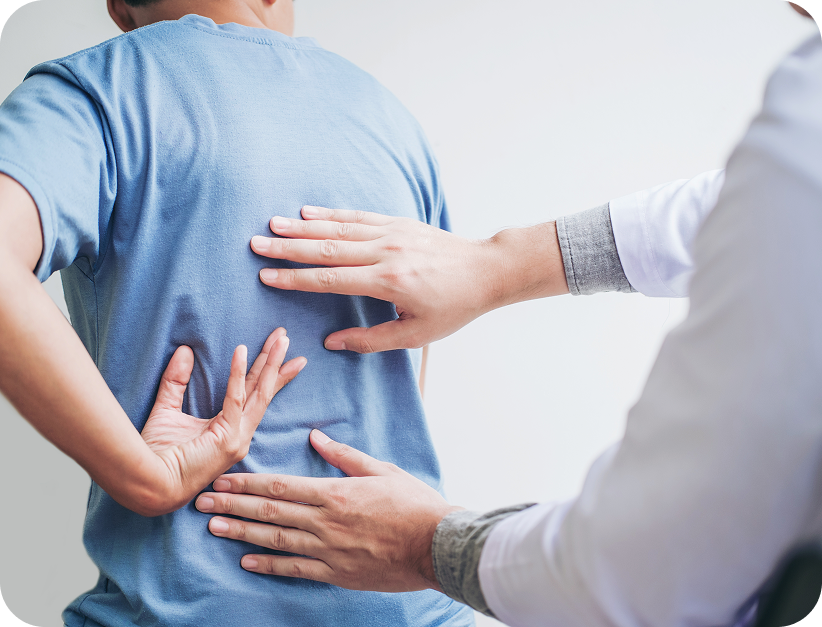
Studies About Ligament Pathology
Neurology of Ligament Pathology
Normal Morphology and Tissue Damage, Connective tissue morphology, embryology and wound repair as sequelae to trauma. Full components of strain-sprain models and permanency implications with wound repair and osseous aberration with aberrant structural integrity. Academy of Chiropractic, Post-Doctoral Division, Cleveland University-Kansas City, College of Chiropractic, Long Island, NY, 2021
Neurology of Ligament Pathology
Spinal Biomechanics and Disc Pathology, Disc pathology as sequela to trauma; herniation, extrusion, protrusion, sequestration and how the spinal unit as one system creates homeostasis to balance the pathology. Academy of Chiropractic, Post-Doctoral Division, Cleveland University-Kansas City, College of Chiropractic, Long Island, NY, 2021
Neurology of Ligament Pathology
Neurological Innervation, The peripheral and central innervation of the disc and spinal ligaments of the dorsal root ganglion, spinal thalamic tracts, periaqueductal gray areas innervating the Thalamus and multiple regions of the brain. The efferent neurological distribution to disparate areas of the spine to create homeostasis until tetanus ensues creating osseous changes under the effect of Wolff’s Law. Academy of Chiropractic, Post-Doctoral Division, Cleveland University-Kansas City, College of Chiropractic, Long Island, NY, 2021
Advanced Spinal Healthcare Analysis and Diagnostics
Trends in Spinal Healthcare
Analyzing spinal healthcare trends in both utilization and necessity and understanding the marketplace and how a clinical excellence level is reflected in a doctors’ documentation and credentials. Treatment pathways in triaging spinal pathobiomechanics. Academy of Chiropractic Post-Doctoral Division, Cleveland University – Kansas City, Long Island, NY, 2021
MRI Spine Interpretation Advanced Diagnosis
An evidence-based understanding of time-related etiology of disc pathology considering the American Society of Neuroradiology’s designation of protrusion, extrusion, and sequestration of spinal discs, T1, T2, STIR and Proton-Density weighted evaluation to diagnose spine form MRI accurately. Academy of Chiropractic Post-Doctoral Division, Cleveland University – Kansas City, Long Island, NY, 2021
Spinal Biomechanical Engineering Analytics and Case Management
Utilizing spinal mensurating algorithms to conclude a pathobiomechanical vs. normal spine in the absence of anatomical pathology. Clinically correlating a history and physical examination findings to x-ray biomechanical results in creating an accurate diagnosis, prognosis, and treatment plan. Academy of Chiropractic Post-Doctoral Division, Cleveland University – Kansas City, Long Island, NY, 2021
Studies About Radiological Interpretation and More
MSK Extremity Radiological Interpretation
Utilizing both MRI and x-ray to diagnose
- Arthritis – Inflammatory and Degenerative,
- Advanced cartilage assessment,
- Rotator Cuff Tears,
- Labral tears (shoulder and hip),
- Tendon injuries and degeneration,
- Meniscal tears,
- Ligamentous injuries,
- Common fractures,
- Sports- related injury patterns,
- Plantar fasciitis.
Academy of Chiropractic Post-Doctoral Division, Cleveland University – Kansas City, Long Island, NY, 2021
Demonstrative Medical-Legal Documentation
Spinal Biomechanics and Disc Pathology, Disc pathology as sequela to trauma; herniation, extrusion, protrusion, sequestration and how the spinal unit as one system creates homeostasis to balance the pathology. Academy of Chiropractic, Post-Doctoral Division, Cleveland University-Kansas City, College of Chiropractic, Long Island, NY, 2021
Managing Non-Anatomical Spine Pain
Treatment modalities centered upon “best-outcomes” in an evidence-based model considering chiropractic vs. physical therapy and chiropractic vs. medicine. Considerations of disability, pain reduction, functional improvement, drugs utilized, and side-effects are all considered. Academy of Chiropractic Post-Doctoral Division, Cleveland University – Kansas City, Long Island, NY, 2021
Studies About Documentation and Interpretation
Documentation and Coding
CPT Coding Guidelines for Initial and Established Patients with particular attention paid to Patient History, Review of Systems, Social and Family History, Physical Examination, and Medical Decision making. Specific differences in coding levels and required elements for a 99202-99203-99204-99205, and a 99212- 99213-99214-99215. Academy of Chiropractic Post-Doctoral Division, Cleveland University – Kansas City Long Island, NY, 2021
Demonstrative Documentation and Ethical Relationships
Pathways to improve coordination of care, and interprofessional communication with collaborating physicians. Maintaining ethical relationships in the medical- legal community through documentation and communication of demonstrable diagnosis, prognosis, and treatment plans. Academy of Chiropractic Post-Doctoral Division, Cleveland University – Kansas City Long Island, NY, 2021
MRI Spine Interpretation
Clinical case review of MRI’s including sagittal, axial, T1, T2, STIR, and proton density sequences. Identified will be the vertebrate, spinal cord, discs, nerve roots, thecal sac, posterior longitudinal ligament, epidural veins, and fat saturation pulses. Pathology will include bulges, herniations, protrusions, extrusions, myelomalacia, cord edema, and Schmorl’s nodes. Academy of Chiropractic Post-Doctoral Division, Cleveland University – Kansas City Long Island, NY, 2021
Spinal Biomechanical Engineering Clinical Grand Rounds
Case reviews utilizing E/M, MRI, and x-ray mensuration report to conclude an accurate diagnosis, prognosis, and treatment plan. Common diagnosis requiring interprofessional collaboration with a discussion of diagnostic dilemmas and proper communication methods. Academy of Chiropractic Post-Doctoral Division, Cleveland University – Kansas City Long Island, NY, 2021
Studies About Spinal Trauma Pathology
Spinal Trauma Pathology
Triage and Connective Tissue Injuries and Wound Repair, Triaging the injured and differentially diagnosing both the primary and secondary complaints. Connective tissue injuries and wound repair morphology focusing on the aberrant tissue replacement and permanency prognosis potential. Cleveland University – Kansas City, ACCME Joint Providership with the State University of New York at Buffalo Jacobs School of Medicine and Biomedical Sciences, Academy of Chiropractic Post-Doctoral Division, Buffalo, New York, 2021
Spinal Trauma Pathology
Ligament Anatomy and Injury Research and Spinal Kinematics, Spinal ligamentous anatomy and research focusing on wound repair, future negative sequelae of abnormal tissue replacement and the resultant aberrant kinematics and spinal biomechanics of the spine. Cleveland University – Kansas City, ACCME Joint Providership with the State University of New York at Buffalo Jacobs School of Medicine and Biomedical Sciences, Academy of Chiropractic Post-Doctoral Division, Buffalo, New York, 2021
Spinal Trauma Pathology
Spinal Biomechanics, Central Nervous System and Spinal Disc Nomenclature, The application of spinal biomechanical engineering models in trauma and the negative sequelae it has on the central nervous system inclusive of the lateral horn, periaqueductal grey matter, thalamus and cortices involvement. Cleveland University – Kansas City, ACCME Joint Providership with the State University of New York at Buffalo Jacobs School of Medicine and Biomedical Sciences, Academy of Chiropractic Post-Doctoral Division, Buffalo, New York, 2021
Spinal Trauma Pathology
Biomechanics of Traumatic Disc Bulge and Age Dating Herniated Disc Pathology, The biomechanics of traumatic disc bulges as sequelae from trauma and the comorbidity of ligamentous pathology. Age- dating spinal disc pathology in accordance with Wolff’s Law. Cleveland University – Kansas City, ACCME Joint Providership with the State University of New York at Buffalo Jacobs School of Medicine and Biomedical Sciences, Academy of Chiropractic Post-Doctoral Division, Buffalo, New York, 2021
Spinal Trauma Pathology
Clinical Grand Rounds, The review of case histories of mechanical spine pathology and biomechanical failures inclusive of case histories, clinical findings and x-ray and advanced imaging studies. Assessing comorbidities in the triage and prognosis of the injured. Cleveland University – Kansas City, ACCME Joint Providership with the State University of New York at Buffalo Jacobs School of Medicine and Biomedical Sciences, Academy of Chiropractic Post-Doctoral Division, Buffalo, New York, 2021
Spinal Trauma Pathology
Research Perspectives, The review of current literature standards in spinal trauma pathology and documentation review of biomechanical failure, ligamentous failure and age-dating disc pathology. Cleveland University – Kansas City, ACCME Joint Providership with the State University of New York at Buffalo Jacobs School of Medicine and Biomedical Sciences, Academy of Chiropractic Post-Doctoral Division, Buffalo, New York, 2021
Studies About Spinal Biomechanical Engineering
Spinal Biomechanical Engineering
Cartesian System, The Cartesian Coordinate System from the history to the application in the human body. Explanation of the x, y and z axes in both translation and rotations (thetas) and how they are applicable to human biomechanics. Academy of Chiropractic Post-Doctoral Division, Buffalo, NY, 2021
Spinal Biomechanical Engineering
Cervical Pathobiomechanics, Spinal biomechanical engineering of the cervical and upper thoracic spine. This includes the normal and pathobiomechanical movement of both the anterior and posterior motor units and normal function and relationship of the intrinsic musculature to those motor units. Nomenclature in reporting normal and pathobiomechanical findings of the spine. Academy of Chiropractic Post-Doctoral Division, Buffalo, NY, 2021
Spinal Biomechanical Engineering
Lumbar Pathobiomechanics, Spinal biomechanical engineering of the lumbar spine. This includes the normal and pathobiomechanical movement of both the anterior and posterior motor units and normal function and relationship of the intrinsic musculature to those motor units. Nomenclature in reporting normal and pathobiomechanical findings of the spine. Academy of Chiropractic Post-Doctoral Division, Buffalo, NY, 2021
Spinal Biomechanics in Trauma
To utilize whiplash associated disorders in various vectors of impact and whiplash mechanisms in determining pathobiomechanics. To clinically correlate annular tears, disc herniations, fractures, ligament pathology and spinal segmental instability as sequelae to pathobiomechanics from trauma. The utilization of digital motion x-ray in diagnosing normal versus abnormal facet motion along with case studies to understand the clinical application. Academy of Chiropractic Post-Doctoral Division, Buffalo, NY, 2021
Spinal Biomechanical Engineering & Organizational Analysis
Integrating spinal biomechanics and pathobiomechanics through digitized analysis. The comparison of organized versus disorganized compensation with regional and global compensation. Correlation of the vestibular, ocular and proprioceptive neurological integration in the righting reflex as evidenced in imaging. Digital and numerical algorithm in analyzing a spine. Academy of Chiropractic Post-Doctoral Division, Buffalo, NY, 2021
Spinal Biomechanical Engineering
Cervical Digital Analysis, Digitizing and analyzing the cervical spine in neutral, flexion and extension views to diagnose pathobiomechanics. This includes alteration of motion segment integrity (AMOSI) in both angular and translational movement. Ligament instability/failure/pathology are identified all using numerical values and models. Review of case studies to analyze pathobiomechanics using a computerized/numerical algorithm. Academy of Chiropractic Post-Doctoral Division, Buffalo, NY, 2021
Spinal Biomechanical Engineering
Lumbar Digital Analysis, Digitalizing and analyzing the lumbar spine images to diagnose pathobiomechanics. This includes anterior and posterior vertebral body elements in rotational analysis with neutral, left and right lateral bending in conjunction with gate analysis. Ligament instability/failure/pathology is identified all using numerical values and models. Review of case studies for analysis of pathobiomechanics using a computerized/numerical algorithm along with corrective guidelines. Academy of Chiropractic Post-Doctoral Division, Buffalo, NY, 2021
Spinal Biomechanical Engineering
Full Spine Digital Analysis, Digitalizing and analyzing the full spine images to diagnose pathobiomechanics as sequelae to trauma in relation to ligamentous failure and disc and vertebral pathology as sequelae. This includes anterior and posterior vertebral body elements in rotational analysis with neutral, left and right lateral bending in conjunction with gate analysis. Ligament instability/failure/pathology is identified all using numerical values and models. Review of case studies for analysis of pathobiomechanics using a computerized/numerical algorithm along with corrective guidelines. Academy of Chiropractic Post-Doctoral Division, Buffalo, NY, 2021
Studies About MRI
MRI History and Physics
Magnetic fields, T1 and T2 relaxations, nuclear spins, phase encoding, spin echo, T1 and T2 contrast, magnetic properties of metals and the historical perspective of the creation of NMR and MRI. Cleveland University – Kansas City, ACCME Joint Providership with the State University of New York at Buffalo Jacobs School of Medicine and Biomedical Sciences, Academy of Chiropractic Post-Doctoral Division, Buffalo, NY, 2021
MRI Spinal Anatomy and Protocols
Normal anatomy of axial and sagittal views utilizing T1, T2, 3D gradient and STIR sequences of imaging. Standardized and desired protocols in views and sequencing of MRI examination to create an accurate diagnosis in MRI. Cleveland University – Kansas City, ACCME Joint Providership with the State University of New York at Buffalo Jacobs School of Medicine and Biomedical Sciences, Academy of Chiropractic Post-Doctoral Division, Buffalo, NY, 2021
MRI Disc Pathology and Spinal Stenosis
MRI interpretation of bulged, herniated, protruded, extruded, sequestered, and fragmented disc pathologies in etiology and neurological sequelae in relationship to the spinal cord and spinal nerve roots. Cleveland University – Kansas City, ACCME Joint Providership with the State University of New York at Buffalo Jacobs School of Medicine and Biomedical Sciences, Academy of Chiropractic Post-Doctoral Division, Buffalo, NY, 2021
MRI Spinal Pathology
MRI interpretation of bone, intradural, extradural, cord and neural sleeve lesions. Tuberculosis, drop lesions, metastasis, ependymoma, Schwannoma and numerous other spinal related tumors and lesions. Cleveland University – Kansas City, ACCME Joint Providership with the State University of New York at Buffalo Jacobs School of Medicine and Biomedical Sciences, Academy of Chiropractic Post-Doctoral Division, Buffalo, NY, 2021
MRI Methodology of Analysis
MRI interpretation sequencing of the cervical, thoracic and lumbar spine inclusive of T1, T2, STIR and 3D gradient studies to ensure the accurate diagnosis of the region visualized. Cleveland University – Kansas City, ACCME Joint Providership with the State University of New York at Buffalo Jacobs School of Medicine and Biomedical Sciences, Academy of Chiropractic Post-Doctoral Division, Buffalo, NY, 2021
MRI Clinical Studies
MRI Clinical Application
The clinical application of the results of space occupying lesions. Disc and tumor pathologies and the clinical indications of manual and adjustive therapies in the patient with spinal nerve root and spinal cord insult as sequelae. Cleveland University – Kansas City, ACCME Joint Providership with the State University of New York at Buffalo Jacobs School of Medicine and Biomedical Sciences, Academy of Chiropractic Post- Doctoral Division, Buffalo, NY, 2021
MRI Protocols Clinical Necessity
MRI slices, views, T1, T2, STIR axial, stacking, FFE, FSE and sagittal images. Clinical indication for the utilization of MRI and pathologies of disc in both trauma and non-trauma sequelae, including bulge, herniation, protrusion, extrusion and sequestration. Cleveland University – Kansas City, ACCME Joint Providership with the State University of New York at Buffalo Jacobs School of Medicine and Biomedical Sciences, Academy of Chiropractic Post-Doctoral Division, Buffalo, NY, 2021
Studies About MRI
MRI Interpretation of Lumbar Degeneration/Bulges
MRI slices, views, T1, T2, STIR axial, stacking, FFE, FSE and sagittal images in the interpretation of lumbar degeneration. With the co-morbidities and complications of stenosis, pseudo-protrusions, cantilevered vertebrate, Schmorl’s nodes and herniations. Central canal and cauda equina compromise interpretation with management. Cleveland University – Kansas City, ACCME Joint Providership With the State University of New York at Buffalo Jacobs School of Medicine and Biomedical Sciences, Academy of Chiropractic Post-Doctoral Division, Buffalo, NY, 2021
MRI Interpretation of Lumbar Herniations
MRI slices, views, T1, T2, STIR axial, stacking, FFE, FSE and sagittal images in the interpretation of lumbar herniations. With the co-morbidities and complications of stenosis, pseudo- protrusions, cantilevered vertebrate, Schmorl’s nodes and herniations. Morphology of lumbar disc pathologies of central and lateral herniations, protrusions, extrusions, sequestration, focal and broad based herniations are defined and illustrated. Central canal and cauda equina compromise interpretation with management. Cleveland University – Kansas City, ACCME Joint Providership with the State University of New York at Buffalo Jacobs School of Medicine and Biomedical Sciences, Academy of Chiropractic Post-Doctoral Division, Buffalo, NY, 2021
MRI Interpretation of Cervical Degeneration/Bulges
MRI slices, views, T1, T2, STIR axial, stacking, FFE, FSE and sagittal images in the interpretation of cervical degeneration. With the co-morbidities and complications of stenosis, pseudo-protrusions, cantilevered vertebrate, Schmorl’s nodes and herniations. Spinal cord and canal compromise interpretation with management. Cleveland University – Kansas City, ACCME Joint Providership with the State University of New York at Buffalo Jacobs School of Medicine and Biomedical Sciences, Academy of Chiropractic Post-Doctoral Division, Buffalo, NY, 2021
MRI Interpretation of Cervical Herniations
MRI slices, views, T1, T2, STIR Axial, FFE, FSE and sagittal images in the interpretation of lumbar herniations. With the co-morbidities and complications of stenosis, pseudo- protrusions, cantilevered vertebrate, Schmorl’s nodes and herniations. morphology of lumbar disc pathologies of central and lateral herniations, protrusions, extrusions, sequestration, focal and broad based herniations are defined and illustrated. Spinal cord and canal compromise interpretation with management. Cleveland University – Kansas City, ACCME Joint Providership with the State University of New York at Buffalo Jacobs School of Medicine and Biomedical Sciences, Academy of Chiropractic Post-Doctoral Division, Buffalo, NY, 2021Chiropractic as the First Option for Spine, A Literature-Based Standard, Spinal biomechanical engineering models related to pathobiomechanics and literature-based standards in creating an accurate diagnosis, prognosis, and treatment plan. Determining impairment ratings based upon alteration of motion segment integrity utilizing motion- imaging, and creating demonstrable evidence for continued treatment plans. PACE Approved for the Federation of Chiropractic Licensing Boards, Cleveland University Kansas City, Academy of Chiropractic Post-Doctoral Division, Long Island, NY, 2021
MRI Interpretation of Degenerative Spine and Disc Disease with Overlapping Traumatic Insult to Both Spine and Disc
MRI slices, views, T1, T2, STIR Axial, FFE, FSE and sagittal images in the interpretation of degenerative spondylolisthesis, spinal canal stenosis, Modic type 3 changes, central herniations, extrusions, compressions, nerve root compressions, advanced spurring and thecal sac involvement from an orthopedic, emergency room, chiropractic, neurological, neurosurgical, physical medicine perspective. Cleveland University – Kansas City, ACCME Joint Providership with the State University of New York at Buffalo Jacobs School of Medicine and Biomedical Sciences, Academy of Chiropractic Post-Doctoral Division, Buffalo, NY, 2021
Trauma Patient Diagnostics and Imaging Training
Neurodiagnostics, Imaging Protocols and Pathology of the Trauma Patient
An in-depth understanding of the protocols in triaging and reporting the clinical findings of the trauma patient. Maintaining ethical relationships with the medical-legal community. Cleveland University – Kansas City, Academy of Chiropractic Post-Doctoral Division, Long Island, NY, 2021
Diagnostics, Risk Factors
Clinical Presentation and Triaging the Trauma Patient, An extensive understanding of the injured with clinically coordinating the history, physical findings and when to integrate neurodiagnostics. An understanding on how to utilize emergency room records in creating an accurate diagnosis and the significance of “risk factors” in spinal injury. Cleveland University – Kansas City, Academy of Chiropractic Post-Doctoral Division, Long Island, NY, 2021
Crash Dynamics and Its Relationship to Causality
An extensive understanding of the physics involved in the transference of energy from the bullet car to the target car. This includes G’s of force, newtons, gravity, energy, skid marks, crumple zones, spring factors, event data recorder and the graphing of the movement of the vehicle before, during and after the crash. Determining the clinical correlation of forces and bodily injury. Cleveland University – Kansas City, Academy of Chiropractic Post-Doctoral Division, Long Island, NY, 2021
MRI, Bone Scan and X-Ray Protocols
Physiology and Indications for the Trauma Patient, MRI interpretation, physiology, history and clinical indications, bone scan interpretation, physiology and clinical indications, x-ray clinical indications for the trauma patient. Cleveland University – Kansas City,Academy of Chiropractic Post- Doctoral Division, Long Island, NY, 2021
Advanced Trauma and Spinal Diagnostics Training
Neurodiagnostic Testing Protocols
Physiology and Indications for the Trauma Patient, Electromyography (EMG), Nerve Conduction Velocity (NCV), Somato Sensory Evoked Potential (SSEP), Visual Evoked Potential (VEP), Brain Stem Auditory Evoked Potential (BAER) and Visual-Electronystagmosgraphy (V-ENG) interpretation, protocols and clinical indications for the trauma patient. Cleveland University – Kansas City, Academy of Chiropractic Post-Doctoral Division, Long Island, NY, 2021
Documentation and Reporting for the Trauma Victim
Understanding the necessity for accurate documentation and diagnosis utilizing the ICD-9 and the CPT to accurately describe the injury through diagnosis. Understanding and utilizing state regulations on reimbursement issues pertaining to healthcare. Cleveland University – Kansas City, Academy of Chiropractic Post-Doctoral Division, Long Island, NY, 2021
Documenting Clinically Correlated Bodily Injury to Causality
Understanding the necessity for accurate documentation, diagnosis and clinical correlation to the injury when reporting injuries in the medical-legal community. Documenting the kinesiopathology, myopathology, neuropathology, and pathophysiology in both a functional and structural paradigm. Cleveland University – Kansas City,Academy of Chiropractic Post-Doctoral Division, Long Island, NY, 2021
Trends in Spinal Healthcare
Analyzing spinal healthcare trends in both utilization and necessity and understanding the marketplace and how a level of clinical excellence is reflected in a doctors’ documentation and credentials. Treatment pathways in triaging spinal pathobiomechanics. Academy of Chiropractic Post-Doctoral Division, Cleveland University – Kansas City, Long Island, NY, 2020
MRI Spine Interpretation
An evidence-based understanding of time-related etiology of disc pathology considering the American Society of Neuroradiology’s designation of protrusion, extrusion, and sequestration of spinal discs, Considering the signal intensity of discs in age-dating pathology and acquisition protocols for advanced spinal imaging. Academy of Chiropractic Post-Doctoral Division, Cleveland University – Kansas City, Long Island, NY, 2020
Advanced Chiropractic Training and Guidelines
Chiropractic as the First Option for Spine
A Literature-Based Standard, Spinal biomechanical engineering models related to pathobiomechanics and literature-based standards in creating an accurate diagnosis, prognosis, and treatment plan. Determining impairment ratings based upon alteration of motion segment integrity utilizing motion- imaging, and creating demonstrable evidence for continued treatment plans. PACE Approved for the Federation of Chiropractic Licensing Boards, Cleveland University Kansas City, Academy of Chiropractic Post-Doctoral Division, Long Island, NY, 2021
Pathobiomechanics and Documentation
CPT Coding Guidelines for Initial and Established Patients with particular attention paid to Patient History, Review of Systems, Social and Family History, Physical Examination, and Medical Decision making. Specific differences in coding levels and required elements for a 99202-99203-99204-99205. Academy of Chiropractic Post-Doctoral Division, Cleveland University Kansas City, Long Island, NY, 2020
Using Documentation and Ethical Relationships
Pathways to improve coordination of care, and interprofessional communication with collaborating physicians. Maintaining ethical relationships in the medical-legal community through documentation and communication of demonstrable diagnosis, prognosis and treatment plans. Academy of Chiropractic Post-Doctoral Division, Cleveland University Kansas City, Long Island, NY, 2020
Studies About Spinal Biomechanics
Spinal Biomechanics
A Literature Perspective, An evidenced-based model for spinal biomechanical engineering and pathobiomechanics considering the pathophysiological limits in translations, angular deviation, and rotational planes. Utilizing the Cartesian system in plotting vertebral points to demonstratively conclude an accurate diagnosis, prognosis and biomechanical treatment plan with the consideration of long-term care in the non-specific mechanical spine pain patient when necessary. Academy of Chiropractic Post-Doctoral Division, Cleveland University – Kansas City, Long Island, NY, 2020
Spinal Biomechanical Engineering Clinical Application
History of clinical biomechanics with an emphasis on the diagnosis and management of spine pain of mechanical/functional origin. Evidence-based symptomatic vs asymptomatic parameters using peer-reviewed medical index literature. Computerized mensuration analysis of spinal biomechanical pathology. Comparison of demonstrable spinal biomechanical failure on imaging to clinical evaluation and physical examination. Academy of Chiropractic Post-Doctoral Division, Cleveland University Kansas City, Long Island, NY, 2020
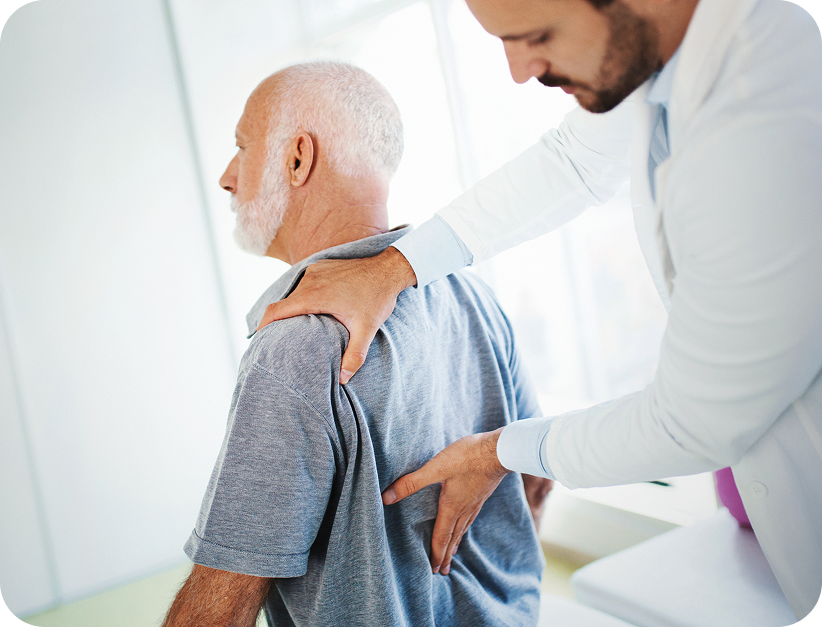
Office Hours
Mon: 10:00 AM - 5:00 PM
Tue - Thu: 8:30 AM - 5:00 PM
Fri: 8:00 AM - 12:00 PM
Sat & Sun: Closed
Contact Our Chiropractors at St. Augustine Today!
